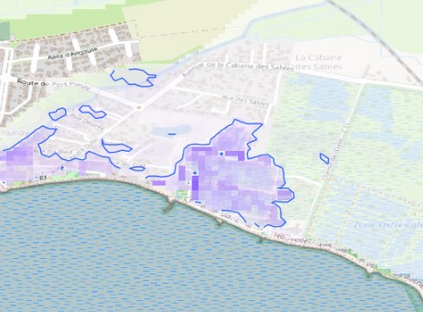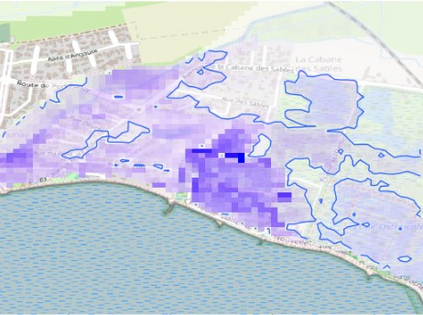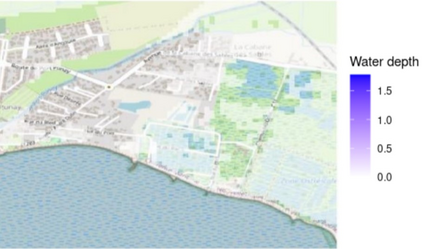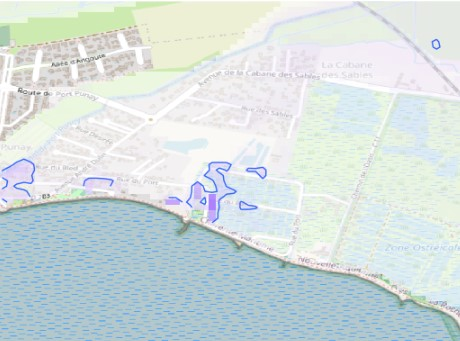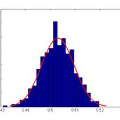Visualization is an essential operation when assessing the risk of rare events such as coastal or river floodings. The goal is to display a few prototype events that best represent the probability law of the observed phenomenon, a task known as quantization. It becomes a challenge when data is expensive to generate and critical events are scarce, like extreme natural hazard. In the case of floodings, each event relies on an expensive-to-evaluate hydraulic simulator which takes as inputs offshore meteo-oceanic conditions and dyke breach parameters to compute the water level map. In this article, Lloyd's algorithm, which classically serves to quantize data, is adapted to the context of rare and costly-to-observe events. Low probability is treated through importance sampling, while Functional Principal Component Analysis combined with a Gaussian process deal with the costly hydraulic simulations. The calculated prototype maps represent the probability distribution of the flooding events in a minimal expected distance sense, and each is associated to a probability mass. The method is first validated using a 2D analytical model and then applied to a real coastal flooding scenario. The two sources of error, the metamodel and the importance sampling, are evaluated to quantify the precision of the method.
翻译:可视化是评估诸如海岸或河流洪水等稀有事件风险时必不可少的一项操作。其目的是展示少数几个最能代表观测现象概率分布的原型事件。这项任务被称为量化。当数据难以生成且关键事件少见时,比如极端天气事件,这变得具有挑战性。在洪水的情况下,每个事件都依赖于一种昂贵的水力模拟器,该模拟器以海上气象和海洋条件以及堤防破口参数作为输入来计算水位图。在本文中,将经典的劳埃德算法调整到稀有且昂贵的观测事件的应用背景中。通过重要性抽样来处理低概率,而将功能主成分分析与高斯过程相组合以应对昂贵的水力模拟。计算出的原型地图在最小预期距离意义下代表了洪水事件的概率分布,每个地图都与一个概率质量相关联。首先使用2D分析模型进行了验证,然后将其应用于真实的海岸洪水情景。评估了两种误差(元模型和重要性抽样)以量化该方法的精度。


